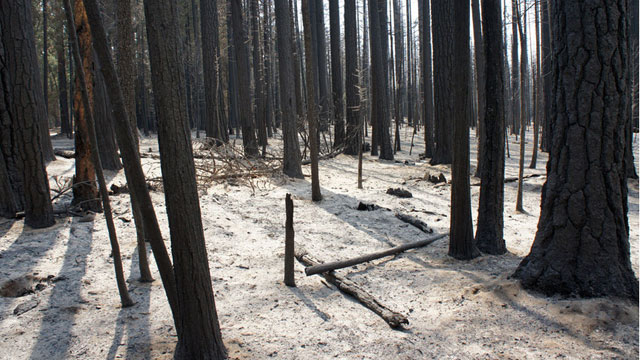National Park Service officials have re-opened parts of Yosemite that have been closed ever since the Rim Fire tore through large swaths of the park last summer.
Visitors can now return to the Tuolumne Grove of Giant Sequoias and to hiking trails near Hetch Hetchy, among other areas. Park officials caution visitors to be careful in burned lands, however, as these areas can still be dangerous, with uneven ground, debris on trails, hazardous trees and the potential for falling rocks.
The Rim Fire burned more than a quarter of a million acres, including about 77,000 acres inside Yosemite National Park, leaving a stark and denuded landscape of dead trees. Park closures during and after the fire crippled businesses that cater to visitors from around the world.

“With the opening of these closed areas and looking at a good year,” said park ranger Scott Gediman, “we’re hopeful that a lot of those businesses can rebound and do well.”
Fire ecologists say it will take decades for the forests to recover, both because of the extent of the burned area and because of California’s drought.